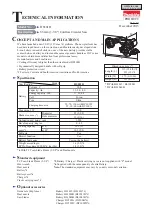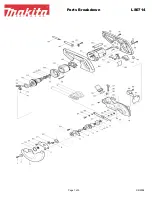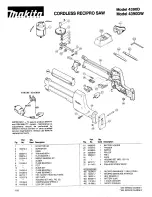
Baker Blue Streak Portable or Stationary Band Sawmill - Rev 2, 03/07;
WWW.BAKER-ONLINE.COM
21
Cutting A Log
Ensure the engine is running 2,800 RPM.
If log requires further positioning after being loaded, bring the clamp arm back a short
distance away from the log.
Use the log turner and, if needed, the toe rollers to position the log as needed.
Position the clamp arm tight against the log.
Note: Always be aware of the position of the clamp arms; log turner, fence arms, and toe
rollers as any one of these items can come in contact with the blade if improperly positioned
during a cut.
Position the clamp arm and fence arms to
a height that will allow an uninterrupted
cut.
Position the saw head to the desired
height.
Ensure the head travel speed is set to
“slow” before moving the carriage forward.
Enter the wood slowly, and then increase
head speed slowly, until engine speed
drops approximately 100 RPM.
Note: Effective cutting speed is determined
by the hardness and width of the material
being cut. It is always best to start slow and
increase speed as the operator’s proficiency
increases.
When ready, push the Head
Forward/Reverse lever fully forward.
At the end of each cut (when the 3 yellow
drag back fingers drop clear of the
material), the saw head must be raised a
minimum of 5/8" to allow for the blade to
clear the material on head return.
Note:
It is not required to drag back each
board or slab after each cut, but to do so the
drag back fingers must remain low enough to catch the cut board/slab while clearing the
uncut portion of the log.
Changing head direction before the blade is clear of the material will result in the blade
damage by being dragged out of the guides and off the wheels. This can also result in
personal injury and/or other equipment damage.
Note:
The blade will travel from 1 1/4" to 30" from the bunks. Always ensure that all
obstructions are clear of the blade before making any cut.
Figure 21
Note: The pictures
referenced are for a 3667D
Portable or Stationary
Sawmill
















































